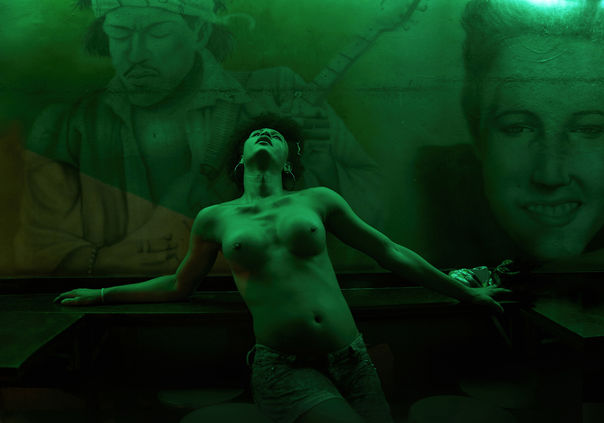Rio de Janeiro as a Transvestite
By Kennith Rosario

© Evangelia Kranioti
Showing in the Panorama section, OBSCURO BARROCO (France, Greece) is a documentary on various kinds of metamorphosis: from nature to civilisation, male to female bodies, silences to loud protests, chaos to spiritual meditation. The film begins with the camera gliding over a forest, taking us back to the genesis of human life. We then follow transgender activist and narrator Luana Muniz on a cable car and see a panoramic view of a vibrant Rio de Janeiro. Through a series of contradictory images (like the intimate spaces of Muniz and impudent performances by trans performers), Kranioti depicts that the city is no different from Muniz: they’re both in a state of constant transition, and are unafraid to express themselves.
The documentary by Greek director Evangelia Kranioti (EXOTICA, EROTICA, ETC. 2015) focuses on Muniz’s body as a vehicle for her activism. For Muniz, her transformed body is a political statement against machismo and patriarchy. Kranioti highlights Muniz’s body using shots that let details emerge. There is ample soft, flattering light and close-ups of Muniz’s long eyelashes, painted nails, brown skin and enlarged breasts. The filmmaker does not flinch from capturing the genitalia of a transvestite performer as she strips on stage, showcasing her dual state of being: man and woman. For Muniz, the human body, after all, is a prop—a costume at a perpetual carnival. What better to illustrate that than by capturing the lifelessness of papier-mâché idols and cardboard faces covered in colour and glitter, left unused after the carnival is done?
As successfully as Kranioti generates euphoria by making us live the exuberance and rawness of an anti-government carnival, she also navigates through the broken dreams and loneliness behind closed doors. Away from the queer community – both the physical and the imagined – trans lives can be rather solitary. The film oscillates between irreverence and contemplation as Muniz narrates poetic passages about the body and soul from Clarice Lispector’s book "Água Viva".
For both Muniz and Rio de Janeiro, religion is what connects them to the world beyond sight and sound. Kranioti highlights the religious syncretism of Brazil by depicting rituals rooted in Catholicism and indigenous Brazilian beliefs, lending another layer of “otherness” to the film. As Kranioti navigates this complex maze of religion, sexuality, gender and politics, she introduces an allegorical figure of a white clown who walks calmly through the madness of carnivals and protests. In his stoic clown face against the background of revelry, we truly understand the deceptiveness of facade.

